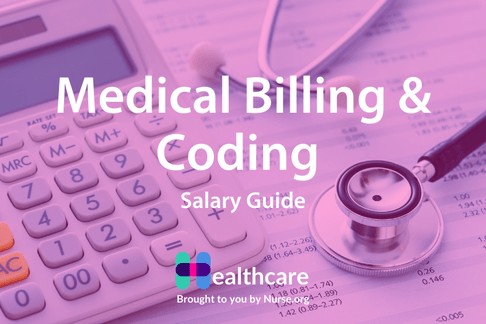Are you considering a career as a phlebotomist and wondering, how much does a phlebotomist make? Understanding the salary expectations for this healthcare profession is crucial for career planning, and HOW.EDU.VN is here to provide you with a detailed overview of phlebotomist earnings, factors influencing their pay, and ways to maximize your earning potential. Discover the typical phlebotomy technician salary, explore opportunities for career advancement, and learn how to connect with experienced professionals for personalized guidance.
1. What is a Phlebotomist?
A phlebotomist is a vital healthcare professional specializing in drawing blood, a process known as venipuncture, for various medical reasons. These reasons include clinical laboratory analysis, diagnosing medical conditions, monitoring medication effectiveness, and managing health conditions. Phlebotomists work in diverse clinical settings, such as hospitals, outpatient clinics, clinical laboratories, nursing homes, doctor’s offices, community health centers, and blood banks.
2. What Does a Phlebotomist Do?
To excel as a phlebotomist, mastering several key skills is essential:
- Excellent Bedside Manner: Patients are often anxious about blood draws, so clear and calm communication is crucial.
- Proper Collection Techniques: This includes disinfecting the area, applying a tourniquet, locating a vein by sight and touch, and inserting the needle with precision.
- Safety and Sanitation: Following strict sanitation and infection control protocols is paramount to prevent safety hazards.
- Specimen Integrity: Ensuring blood specimens are contamination-free to guarantee accurate results.
- Accurate Labeling: Properly labeling all blood vials with correct patient information is vital.
- Proper Storage and Transfer: Ensuring specimens are stored correctly and promptly transferred to the appropriate location for analysis.
3. What is the Average Phlebotomist Salary?
According to the latest data from the US Bureau of Labor Statistics (BLS), the average phlebotomist salary in the US is $43,660 per year, or $20.99 per hour. The BLS also projects a positive career outlook for phlebotomists, with an 8% growth in the profession expected between 2023 and 2033.
4. Phlebotomy Salary Factors
Several factors influence a phlebotomist’s salary, including experience, workplace, and geographic location.
4.1. Years of Experience
Experience is a significant factor in determining a phlebotomist’s earnings. According to Payscale, the average base salary for phlebotomists is $41,365, with an average hourly rate of $17.85. Entry-level phlebotomists with less than a year of experience can expect to earn around $14.66 per hour, while those with over 20 years of experience earn an average of $20.51 per hour.
The hourly wages for phlebotomists based on experience level are:
- Entry-level: $14.66
- Early career: $16.49
- Mid-career: $18.08
- Experienced: $19.38
- Late career: $20.51
4.2. Type of Workplace
The type of healthcare facility where a phlebotomist works also impacts their salary. According to the BLS, the median annual phlebotomist salary in 2024 varies by work location:
- Outpatient care centers: $48,450
- Medical and diagnostic laboratories: $45,700
- Hospitals; state, local, and private: $41,490
- Offices of physicians: $40,480
- All other ambulatory healthcare services: $39,180
4.3. Phlebotomist Salaries by Location
Geographic location significantly influences a phlebotomist’s income.
4.3.1. States With the Highest Phlebotomy Salary
The top 5 states where phlebotomists earn the most are:
- California: $52,370
- Washington: $50,800
- New York: $50,110
- Maryland: $48,970
- Delaware: $48,630
4.3.2. Phlebotomist Salary by State
Here’s a detailed breakdown of phlebotomist salaries by state:
| State | Annual Salary | Hourly Wage |
|---|---|---|
| Washington | $44,916.00 | $21.59 |
| District of Columbia | $44,814.00 | $21.55 |
| New York | $43,387.00 | $20.86 |
| Massachusetts | $43,311.00 | $20.82 |
| Alaska | $42,709.00 | $20.53 |
| Vermont | $42,166.00 | $20.27 |
| North Dakota | $41,961.00 | $20.17 |
| Oregon | $41,930.00 | $20.16 |
| Colorado | $41,701.00 | $20.05 |
| Hawaii | $41,203.00 | $19.81 |
| Nevada | $40,384.00 | $19.42 |
| New Jersey | $40,262.00 | $19.36 |
| Wisconsin | $40,029.00 | $19.24 |
| Pennsylvania | $39,753.00 | $19.11 |
| Delaware | $39,692.00 | $19.08 |
| South Dakota | $39,658.00 | $19.07 |
| Virginia | $39,318.00 | $18.90 |
| California | $39,139.00 | $18.82 |
| Minnesota | $38,841.00 | $18.67 |
| Rhode Island | $38,837.00 | $18.67 |
| New Hampshire | $38,568.00 | $18.54 |
| Maryland | $38,490.00 | $18.50 |
| New Mexico | $38,431.00 | $18.48 |
| Illinois | $38,429.00 | $18.48 |
| Maine | $38,397.00 | $18.46 |
| Wyoming | $38,120.00 | $18.33 |
| Nebraska | $37,812.00 | $18.18 |
| Indiana | $37,737.00 | $18.14 |
| Connecticut | $37,726.00 | $18.14 |
| Ohio | $37,703.00 | $18.13 |
| Mississippi | $37,559.00 | $18.06 |
| Idaho | $37,314.00 | $17.94 |
| Iowa | $37,249.00 | $17.91 |
| Missouri | $37,199.00 | $17.88 |
| Arizona | $36,957.00 | $17.77 |
| Texas | $36,947.00 | $17.76 |
| South Carolina | $36,801.00 | $17.69 |
| Oklahoma | $36,617.00 | $17.60 |
| Montana | $36,400 | $17.50 |
| Utah | $36,103 | $17.36 |
| North Carolina | $36,041 | $17.33 |
| Tennessee | $35,994 | $17.30 |
| Alabama | $35,945 | $17.28 |
| Kansas | $35,369 | $17.00 |
| Michigan | $34,566 | $16.62 |
| Kentucky | $34,444 | $16.56 |
| Louisiana | $33,912 | $16.30 |
| Georgia | $33,486 | $16.10 |
| Arkansas | $32,793 | $15.77 |
| West Virginia | $30,702 | $14.76 |
| Florida | $29,636 | $14.25 |


4.3.3. Highest Paying Cities for Phlebotomists
The top 5 cities where phlebotomists earn the most are:
- San Jose-Sunnyvale-Santa Clara, CA: $60,600 per year
- San Francisco-Oakland-Hayward, CA: $59,690 per year
- Santa Maria-Santa Barbara, CA: $57,500 per year
- Santa Cruz-Watsonville, CA: $57,020 per year
- Stockton-Lodi, CA: $56,340 per year
5. Ways to Increase Your Salary as a Phlebotomist
5.1. Phlebotomy Certification
While not all states require certification, becoming a certified phlebotomy technician can increase your earning potential and demonstrate your professional knowledge. Several certification agencies offer certification, each with varying requirements, testing procedures, and costs.
Commonly used certification agencies include:
- American Certification Agency For Healthcare Professionals (ACA)
- American Medical Certification Association (AMCA)
- American Medical Technologists (AMT)
- The American Society For Clinical Pathology (ASCP)
- The National Center For Competency Testing (NCCT)
5.2. Further Your Education
Phlebotomy education typically involves a diploma or certificate program lasting 4-9 months. However, the role provides exposure to other medical careers that may offer higher salaries and increased responsibilities.
Consider advancing your education in another healthcare field while working as a phlebotomist to gain a foothold in the healthcare facility where you are already employed. For instance, many phlebotomists work closely with nurses, gaining insights into their roles and responsibilities, which can inspire further education in nursing.
5.3. Become a Phlebotomy Trainer
Medical facilities may offer a higher hourly wage for phlebotomists who take on the responsibility of training new graduates or new hires. This demonstrates your value to administrators and increases your income while providing an edge for future promotions.
5.4. Be Promoted to Manager or Supervisor
Mastering your skills, becoming certified, and gaining experience can lead to a management position. Becoming a phlebotomy supervisor offers additional responsibilities and a higher hourly wage.
5.5. Work Per-Diem
Per diem employees are valuable for filling daily staffing needs. Employers require a specific number of phlebotomists daily, and per diem employees help meet these needs. This flexibility often results in higher earnings than a career phlebotomy salary. Some per diem phlebotomists work between multiple facilities or as mobile phlebotomists, traveling to different medical facilities with increased demand.
5.6. Relocate
Geographic location significantly impacts phlebotomist salaries. However, consider the cost of living in areas with higher salaries. A higher salary in a city like Los Angeles may not be worthwhile due to increased living expenses.
6. Is Becoming a Phlebotomist Right for You?
If you are comfortable with the sight of blood and excited about working in a team of medical professionals, a career in phlebotomy may be a good choice. Researching earning potential and considering factors such as location, workplace, experience, certification, and career advancement are essential. Consistency and hard work can lead to a rewarding, lifelong career, potentially placing you in the top 10% of phlebotomist earners.
7. Discover Expert Guidance at HOW.EDU.VN
Navigating the complexities of career choices and salary expectations can be challenging. At HOW.EDU.VN, we connect you with leading experts, including experienced phlebotomists and healthcare professionals, who can provide personalized guidance and insights.
7.1. Why Seek Expert Advice?
- Informed Decisions: Gain clarity on salary benchmarks and career progression.
- Personalized Strategies: Receive tailored advice to enhance your earning potential.
- Industry Insights: Stay updated on the latest trends and opportunities in the healthcare sector.
7.2. Connect with Our Experts
HOW.EDU.VN offers a seamless platform to connect with over 100 renowned experts, including PhDs, who can address your specific questions and concerns. Our experts provide:
- Career Counseling: Guidance on educational paths, certifications, and career advancement.
- Salary Negotiation Tips: Strategies to negotiate your salary effectively.
- Work-Life Balance Advice: Tips to manage the demands of a healthcare career while maintaining personal well-being.
8. Phlebotomist Career Path
A phlebotomist career offers a stable and growing job market with opportunities for advancement.
8.1. Job Outlook
The BLS projects an 8% growth for phlebotomists between 2023 and 2033, indicating a strong demand for these professionals.
8.2. Career Advancement
- Specialization: Focus on specific areas, such as pediatric or geriatric phlebotomy, to increase expertise and earning potential.
- Management Roles: Advance to supervisory or management positions by gaining experience and demonstrating leadership skills.
- Further Education: Pursue higher education in related fields like nursing or medical technology for greater career opportunities.
9. Contact Us For Expert Career Advice
Ready to take the next step in your phlebotomy career? Contact HOW.EDU.VN for expert advice and personalized guidance. Our team of PhDs and experienced professionals are here to help you navigate the complexities of the healthcare industry and achieve your career goals.
- Address: 456 Expertise Plaza, Consult City, CA 90210, United States
- WhatsApp: +1 (310) 555-1212
- Website: how.edu.vn
10. Frequently Asked Questions (FAQs) About Phlebotomist Salaries
10.1. What is the starting salary for a phlebotomist?
Entry-level phlebotomists can expect to earn around $14.66 per hour, which translates to approximately $30,492 per year.
10.2. How can I increase my salary as a phlebotomist?
You can increase your salary by obtaining certifications, gaining experience, pursuing further education, becoming a trainer, seeking promotions, working per diem, or relocating to a higher-paying area.
10.3. Which states pay phlebotomists the most?
The top-paying states for phlebotomists are California, Washington, New York, Maryland, and Delaware.
10.4. What is the average salary for a certified phlebotomist?
While certification doesn’t guarantee a higher salary, it often leads to better job opportunities and can increase your earning potential. Certified phlebotomists may earn slightly more than non-certified ones, depending on the employer and location.
10.5. How does experience affect phlebotomist salary?
Experience is a significant factor. Phlebotomists with 20+ years of experience can earn an average of $20.51 per hour, compared to $14.66 per hour for entry-level phlebotomists.
10.6. What types of workplaces pay phlebotomists the most?
Outpatient care centers tend to pay the highest, with a median annual salary of $48,450.
10.7. Is there a demand for phlebotomists?
Yes, the BLS projects an 8% growth in the profession between 2023 and 2033, indicating a strong demand for phlebotomists.
10.8. Can I work as a phlebotomist part-time?
Yes, many healthcare facilities offer part-time positions for phlebotomists, providing flexibility in scheduling.
10.9. What are the typical working hours for a phlebotomist?
Working hours can vary depending on the employer and work setting. Phlebotomists may work during regular business hours, evenings, weekends, or holidays, especially in hospitals and emergency care centers.
10.10. What skills are important for a phlebotomist?
Important skills include excellent bedside manner, proper collection techniques, adherence to safety and sanitation protocols, attention to specimen integrity, and accurate labeling.
11. Understanding User Search Intent
To provide comprehensive and relevant information, it’s essential to address the various search intents users have when looking for information on phlebotomist salaries. Here are five key search intents and how this article fulfills them:
-
Informational: Users seeking general information about phlebotomist salaries, job duties, and career outlook.
- This article provides a detailed overview of what a phlebotomist does, the average salary, and factors influencing earnings.
-
Comparative: Users comparing phlebotomist salaries across different states, cities, and workplaces.
- The article includes comprehensive data on phlebotomist salaries by state and highlights the highest-paying cities and types of workplaces.
-
Action-Oriented: Users looking for ways to increase their salary as a phlebotomist or advance their career.
- The article offers practical tips on obtaining certifications, furthering education, and seeking promotions.
-
Educational: Users interested in understanding the education and certification requirements to become a phlebotomist.
- The article outlines the typical education path and lists commonly used certification agencies.
-
Career Planning: Users evaluating whether a career as a phlebotomist is right for them.
- The article discusses the job outlook, skills required, and provides insights into the pros and cons of the profession.
By addressing these search intents, this article aims to be a comprehensive resource for anyone interested in phlebotomist salaries and career opportunities.
